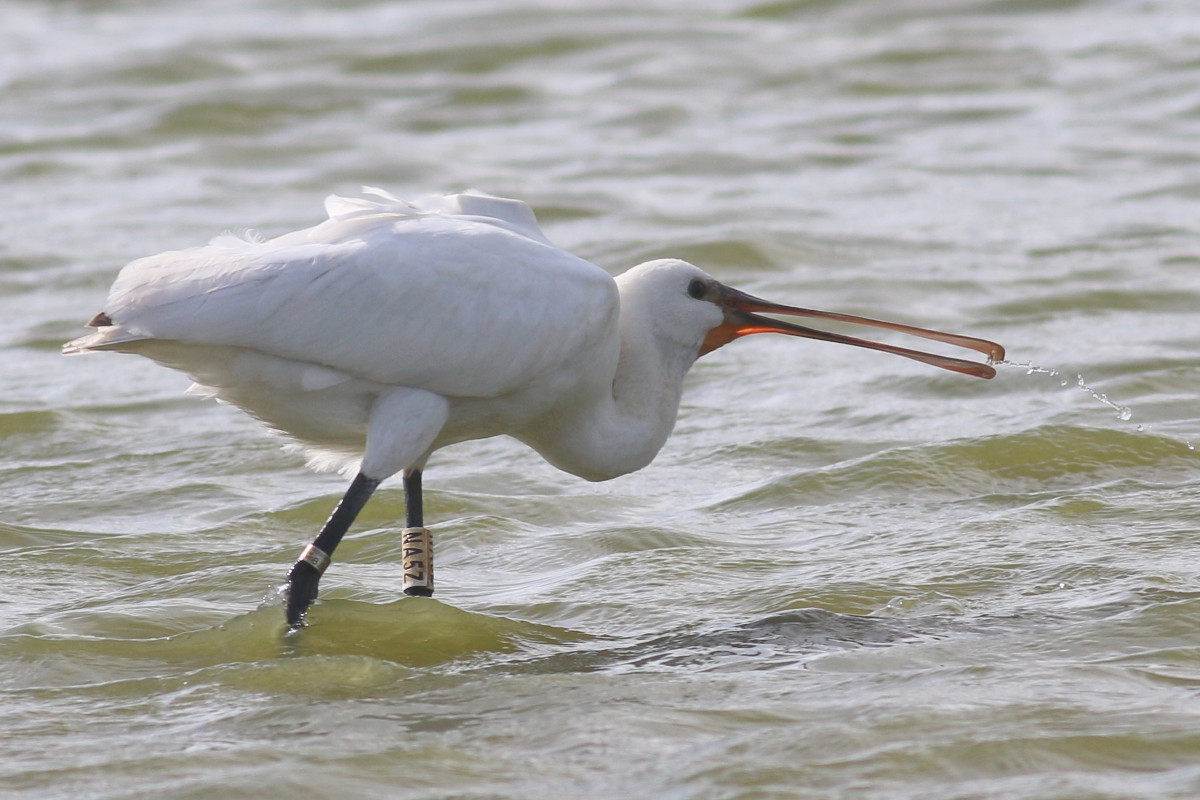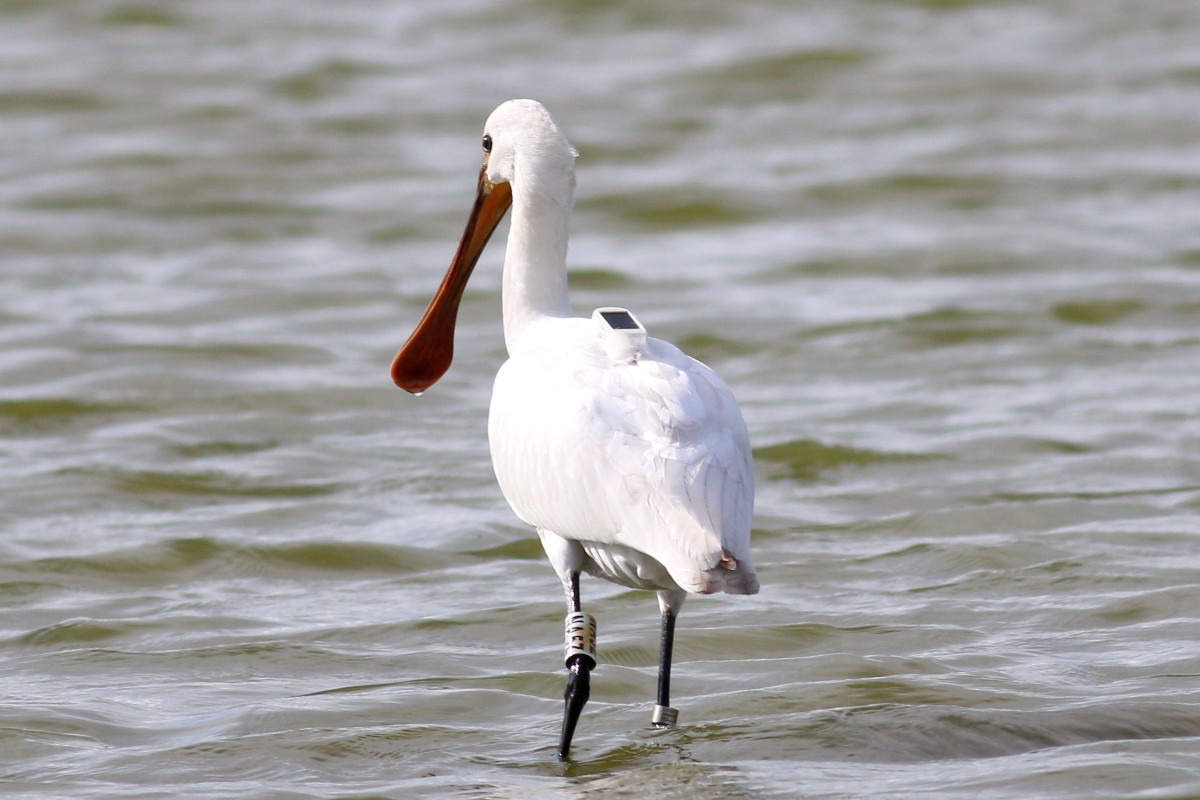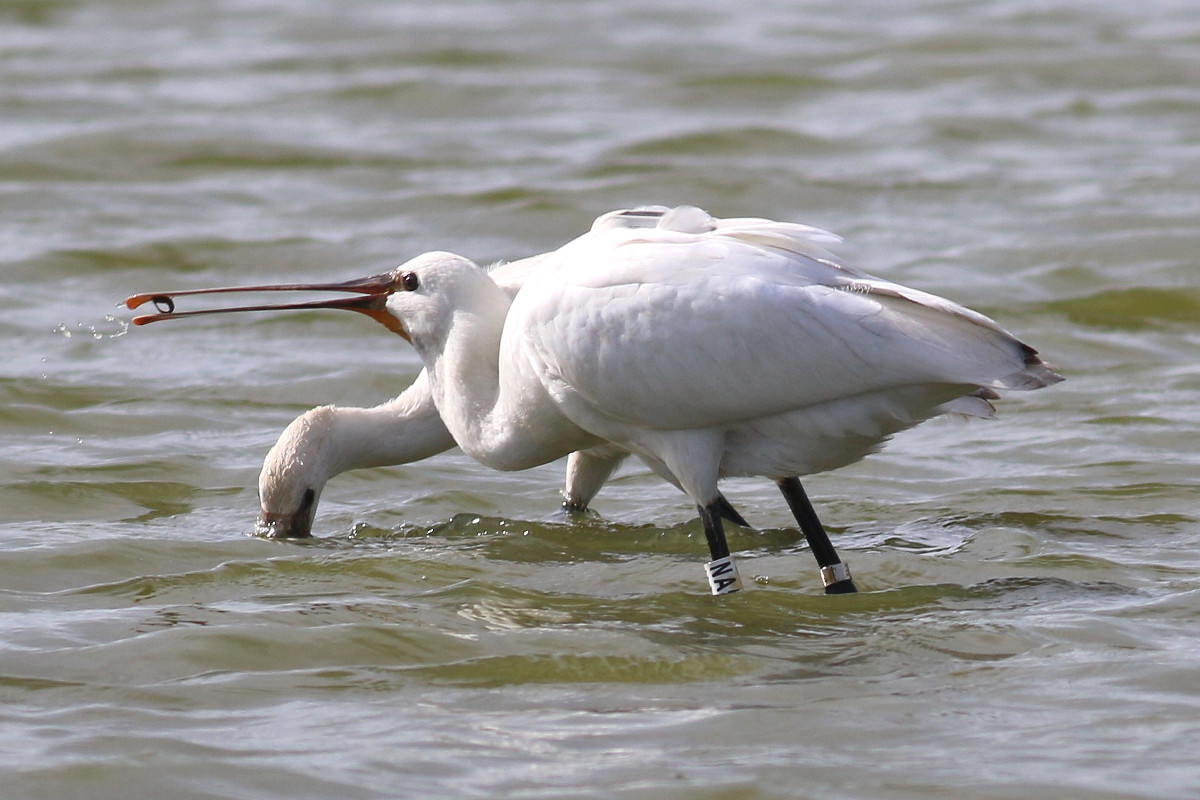Research methods
Spoonbills in the Netherlands are studied in various ways.
Counting breeding pairs and monitoring breeding success
First of all, we monitor the population development and distribution of the spoonbills. We do this by counting the number of breeding pairs in all Dutch colonies in collaboration with site managers and volunteers and determine the number of fledglings as accurately as possible. In close consultation with Sovon (Dutch Centre for Field Ornithology), this creates an almost complete picture of the ups and downs of the Dutch spoonbill population every year.
Color rings
Spoonbills have been colour-ringed in Dutch breeding colonies since 1972. Colour-ring readings are carried out by more than a thousand dedicated volunteers. Resighting data of these individual spoonbills are stored in a database, which is maintained by the working group. The Dutch Spoonbill Working Group also manages data on spoonbills ringed in Belgium and Germany and collaborates with other ringing groups within Europe and abroad. In addition, the working group coordinates the colourringing of the balsaci subspecies in Mauritania. After a number of years, we were able to start calculating with these data. For example, it appears that survival depends on population size. The reason for this is probably competition for food. Survival clearly decreases as spoonbill numbers increase. Moreover, survival strongly differed between adults and juveniles. Survival of juveniles is the lowest, with most juvenile mortality occurring after the breeding season, on their first journey southward. Adults experience highest mortality on the way back from West Africa to the Netherlands. Resightings in winter showed that there is a shift going on from wintering in West Africa to the Iberian Peninsula, and survival of spoonbills wintering in Europe is higher than of birds wintering in Africa. Sometimes people wonder whether further research is still necessary, for example with the argument “we already know everything”. First of all, there is a lot we still don’t know, but also the current situation may change, an example of this being the recent shift of the wintering distribution from Africa to Europe. Long-term colour-ring research provides invaluable data on, among other things, (changes in) survival, age structure, migration strategies and habitat choice.
GPS-tracking research
On the Wadden Sea island Schiermonnikoog, a number of spoonbills have been equipped with a GPS tracker, a so-called UvA-BiTS tracker that registers GPS coordinates every 10 minutes. Thanks to these data, we now know that all spoonbills have their own area where they search for food (forage). The males breed during the day in the colonies and forage at night, while females show the opposite pattern. The tagged males of Schiermonnikoog go to the mainland every night to get their food from the lake Lauwersmeer. The females eat on the mudflats during the day at low tide and again all have their own fixed area. . The spoonbills therefore show a high foraging site-fidelity. These findings we would never have known without the use of GPS-trackers.
In the Netherlands you can collect a lot of data without using GPS-trackers, but the world of the Spoonbill is much bigger. With these transmitters we can show what the spoonbills do on their migration route, which (for us) inaccessible areas they need on the migration route and during winter. This type of research is invaluable, among other things to unravel all kinds of threats that we humans pose to these birds.
In addition, the researchers hope to gain a better understanding of whether the large individual variation in migration routes is mainly determined by genetic variation or by variation in environmental factors, such as wind direction and speed, food supply, but also by the behavior of conspecifics, which the birds encounter during their first southward migration.
GPS-trackers provide a lot of data, but also have their limitations. For example, they provide no information about the habitat characteristics of where the spoonbills stay and whether they forage alone or with conspecifics. That kind of information has still to be collected ‘on the ground’. In practice, this is done in collaboration with researchers, nature managers and a large network of volunteers along the migratory route.
Spoonbill Ravi with radio transmitter on his back, photographed at Westkapelle - Photo: Kees Vliet Vlieland Photo: Kees Vliet Vlieland Photo: Kees Vliet Vlieland
Food
Recent research on the diet of spoonbills on the Wadden Sea islands has revealed that shrimps are not the main food during the breeding season, but small fish such as gobies, sticklebacks and young flatfish. For this purpose food remains, that young spoonbills sometimes regurgitate when disturbed, were analysed. For years it was thought that spoonbills mainly ate shrimps because this prey is most visible in the food remains. Accurate analyses therefore gave a different picture. It immediately provides an explanation why the spoonbill population on the Wadden Sea islands seems to have reached its limit relatively quickly. Young flatfish and other small fish appear to be quite scarce in the Wadden Sea in recent years, in contrast to shrimps.
International
Research on spoonbills is also taking place in other countries. The various researchers and working groups are united in the Eurasian Spoonbill International Expert Group (ESIEG). Founded in 1991 to halt the species' international decline, this group meets every three years to share and discuss research findings and has developed an international action plan for the species.
LINK: Facebookpage of ESIEG
Findings
Now, as nature managers and researchers, we are fortunate to know, among other things:
- how new settlements of colonies come about (where do the immigrants come from, do individuals keep coming back after settlement, how are the settlements connected in different places)
- that colonies on the Wadden Sea islands reached their limits remarkably quickly after several years of rapid growth
- that this has to do with density-dependent (most likely food-driven) processes that rapidly reduce growth of numbers and breeding success in colonies
- that for spoonbills (at least on the Wadden Sea) shrimps are much less important as food than we thought, and the relatively scarce small fish are much more important
- that the colony of Schiermonnikoog already reached its current size around the year 2000, and that the relatively large colony size compared to most other islands is likely due to the fact that the male spoonbills go to catch fish at night in the fish-rich shallow waters of the Lauwersmeer
- that most mortality of fledged young occurs in the breeding area and during their first migration south (60% of the fledglings does not survive their first winter), and that this mortality has increased from 30% at a population size of 1200 breeding pairs to 60% at 2800 breeding pairs;
- that large numbers of spoonbills winter in West Africa (particularly in Mauritania and Senegal), but increasingly ‘linger’ in Europe, where survival is higher than in West Africa.




